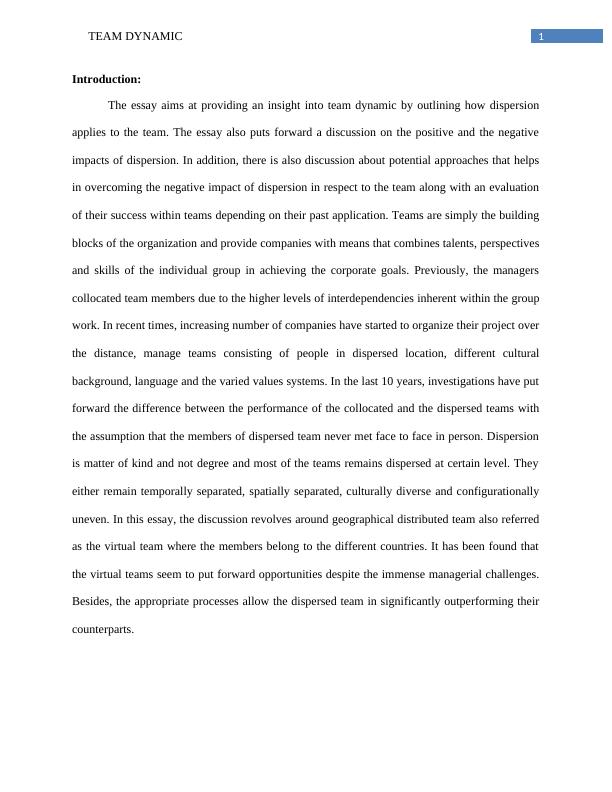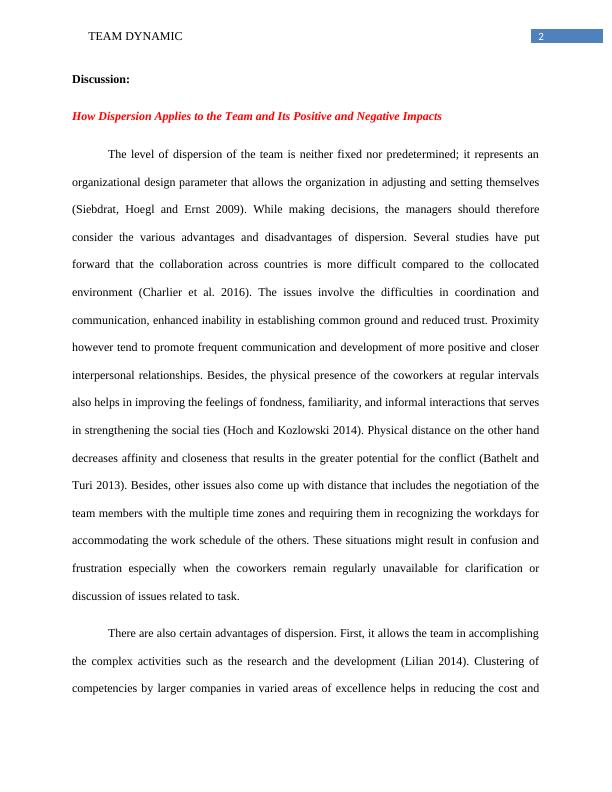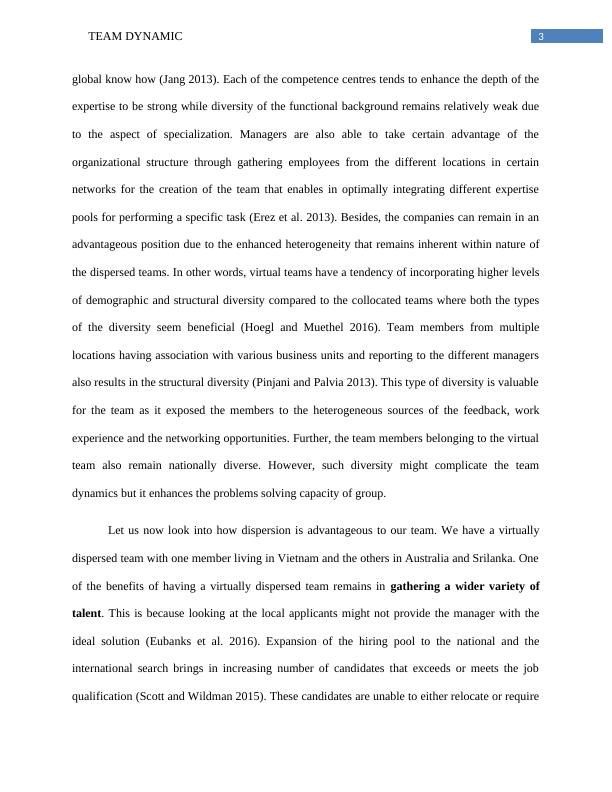Team Dynamic
Write an essay on the topic of dispersion in teams, its types and impacts, and potential approaches to overcoming the negative impacts.
14 Pages4301 Words161 Views
Added on 2023-05-30
About This Document
The essay aims at providing an insight into team dynamic by outlining how dispersion applies to the team. The essay also puts forward a discussion on the positive and the negative impacts of dispersion. In addition, there is also discussion about potential approaches that helps in overcoming the negative impact of dispersion in respect to the team along with an evaluation of their success within teams depending on their past application.
Team Dynamic
Write an essay on the topic of dispersion in teams, its types and impacts, and potential approaches to overcoming the negative impacts.
Added on 2023-05-30
ShareRelated Documents
End of preview
Want to access all the pages? Upload your documents or become a member.
Understanding the Dispersion in Teams: Positive and Negative Approaches
|15
|4338
|240
Organizational Change Management Assignment PDF
|13
|3395
|104
Management: Organizational Behavior
|10
|2081
|343
Importance of Virtual Team in R&D Industry
|8
|1551
|268
Client Approaches Adopted by Ellen and Jack | Essay
|5
|1011
|48
Influence of Culture, Power, and Politics on Individual and Group Behavior
|8
|2206
|51




